Introduction
It is very important to understand that a crack in drywall, specifically in the ceiling, could indicate structural damage. Be sure to check the framing of the room and fix any problems before fixing cracks in your ceiling.
Tools
Parts
-
-
Use a utility knife or five-in-one to remove loose paint or drywall from inside the crack.
-
Don’t gouge the ceiling but firmly scrape parallel to the crack. Scraping perpendicularly to the crack will only cause more damage.
-
-
-
Use mesh tape to tape over the crack.
-
Try to use long pieces of tape, if possible taping the entire crack with one piece.
-
It is also important to keep each piece of tape centered on the crack.
-
-
-
Use either a five-in-one or a putty knife to spread the compound.
-
Spread drywall joint compound over the tape so that it appears flat.
-
Use more joint compound than you need rather than less. You will sand off excess later.
-
Make sure to cover the tape completely.
-
-
-
After the compound has completely dried sand down any ridges that resulted from the putty knife.
-
This step will be messy! Everything in the room will get some dust on it, so either use dropcloths or be ready to clean when you're done.
-
Also, be careful not to get dust in your eyes, or inhale dust. You may wish to wear goggles and a dust mask.
-
Don’t sand into the tape.
-
You still want the compound to cover the tape and its contours completely.
-
-
-
Prime and paint the ceiling.
-
Use a primer and paint that has been matched to your ceiling by a paint shop.
-
The primer can be any color that is the same or lighter than your ceiling color.
-
It is important to note that a crack in drywall may indicate a more critical problem with the framing in your walls or ceiling. Please do not assume that this repair will prevent further cracking.
4 comments
Is it ok to remove the excess compound and smooth with a damp sponge?
I just rocked my third ceiling. The first looked like "before" in some spots; the next 2 are flawless. The secret is to put on very thin layers, and lots of them. Of course this takes a long time to dry each coat. But if you put the mud on thick it will shrink and crack later, plus you have a lot to scrape off and then you still have to fill in low spots.
If you use a sponge first, you can end up with a lumpy mess. Level it with a 12 inch knife until it's nearly flat, then on the last coat skim it over and smooth with the sponge.
My popcorn ceiling has peeled. I took away those rough edges. Can I spray on the popcorn ceiling. It's just small sections.
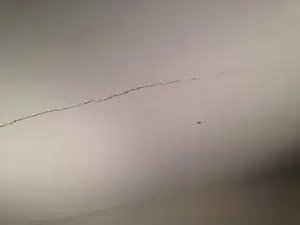
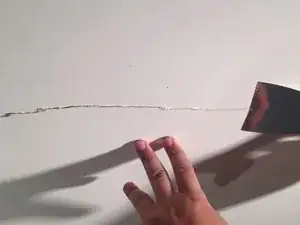
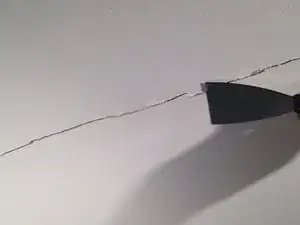
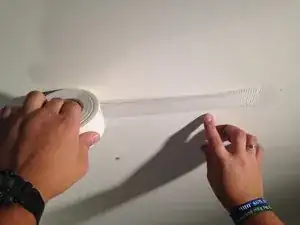
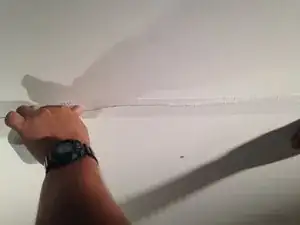
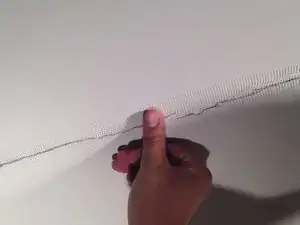
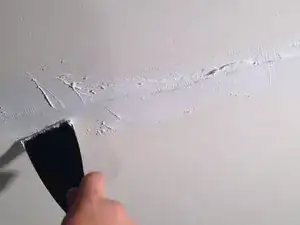
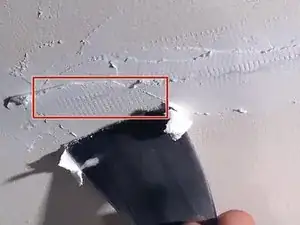
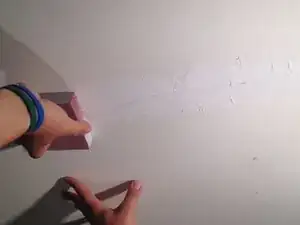
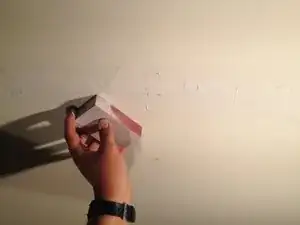
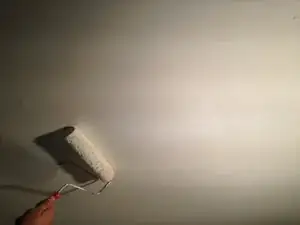

Hello!
Je pense qu’il faut mieux utiliser ça!
https://www.leroymerlin.fr/v3/p/produits...
Slava Korchmar -